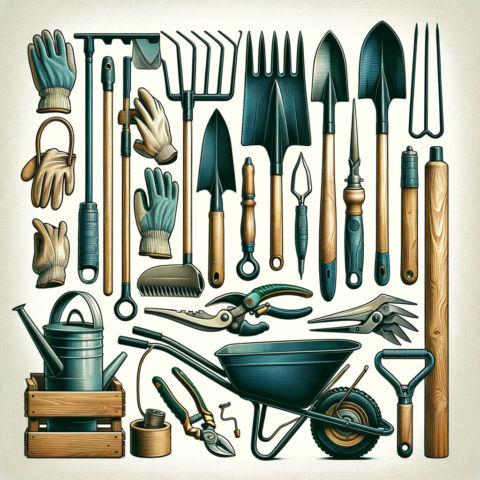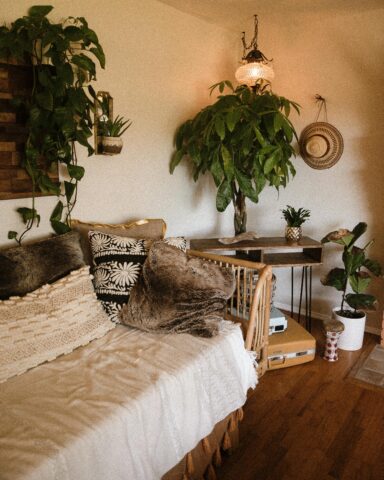As busy individuals juggling multiple responsibilities, keeping a well-organized home can often feel like an impossible task. However, with the right strategies and systems in place, you can achieve a consistently tidy and efficient household.

Developing a Chore Schedule
One effective way to distribute tasks evenly among family members is by creating a chore schedule. This not only helps to divide the workload but also ensures that everyone contributes to maintaining a clean and organized home.
To develop a chore schedule, start by listing all the household tasks that need to be done on a regular basis, such as laundry, dishes, and vacuuming. Then, assign each task to a specific day or week depending on its frequency. Be sure to rotate tasks among family members to avoid anyone feeling overburdened with certain chores.
The Benefits of Checklists and Chore Charts
Checklists and chore charts are valuable tools for staying organized. They provide a visual representation of all the tasks that need to be done, making it easier to keep track of what has been completed and what still needs attention. In addition, they can be motivating and help create a sense of accomplishment when tasks are checked off.
Time-Saving Cleaning Routines
Cleaning each room in your home can be a daunting task, but implementing time-saving routines can make it more manageable. One strategy is to break down cleaning tasks into smaller chunks and assign them to specific days or times. For example, dedicate Mondays to dusting and Tuesdays to mopping. This not only keeps your home consistently clean but also prevents the overwhelming feeling of trying to tackle everything at once.
Eco-Friendly Cleaning Products and Practices
In addition to saving time, using eco-friendly cleaning products and practices can benefit both your health and the environment. You can make your own natural cleaners with ingredients like vinegar, baking soda, and essential oils. Also, consider using reusable cleaning cloths instead of disposable ones to reduce waste.
Streamlining Laundry Tasks
Laundry is an ongoing chore that can quickly become overwhelming if not managed efficiently. To streamline your laundry tasks, designate specific days for washing, drying, and folding. This will help prevent a pile-up of dirty clothes and create a more organized laundry room or area.
Managing Grocery Shopping and Meal Planning
Grocery shopping and meal planning are crucial for an efficient kitchen. To save time and money, consider creating a master grocery list that includes all your essential items. This will prevent multiple trips to the store and ensure you have everything needed for meals throughout the week. Additionally, take advantage of meal planning apps and websites to help plan out your meals in advance.
Technology and Smart Home Devices
Technology and smart home devices can be a game changer for managing household chores. From setting reminders for tasks to automating cleaning processes, these tools can make keeping a tidy home much more manageable. Consider investing in a robotic vacuum or smart lighting system to simplify your cleaning routine.
Creative Solutions for Organizing Children’s Toys and Play Areas
Keeping children’s toys and play areas organized can be a constant struggle. One creative solution is to use storage bins or baskets labeled with pictures instead of words. This makes it easier for young children to know where items should go and encourages them to clean up after themselves.
Establishing a Functional Home Office or Workspace
With remote work and study becoming more prevalent, establishing a functional home office or workspace is essential. Dedicate a specific area in your home for these tasks and invest in proper equipment, such as a comfortable chair and desk. This will not only increase productivity but also help maintain a healthy work-life balance.
Effective Time Management Principles
When juggling household chores and other responsibilities, effective time management is key. Some principles to keep in mind include prioritizing tasks, setting realistic deadlines, and delegating when possible. Remember to also schedule breaks for yourself to avoid burnout.
By implementing these tips and strategies, you can achieve a well-organized and efficient household. Remember to adjust these systems as needed and find what works best for your family. With consistency and perseverance, you can maintain a tidy home even in the midst of a busy schedule. # Organizing Your Home: Tips and Strategies for an Efficient Household
As busy individuals juggling multiple responsibilities, keeping a well-organized home can often feel like an impossible task. However, with the right strategies and systems in place, you can achieve a consistently tidy and efficient household.
For many homeowners, a tidy and efficient household is not just a preference but a necessity. Organizing your home can dramatically improve your quality of life, reducing stress, increasing productivity, and creating a serene living environment. This guide offers practical tips and strategies to transform your home into an organized, efficient haven.
Understanding Clutter and Its Impact
Clutter is more than just a pile of unsorted items; it’s a reflection of our lifestyle and mindset. A cluttered space can lead to increased stress, hinder productivity, and negatively affect your mood and well-being. It’s crucial to understand the psychological impact of clutter to effectively address it. Clutter represents delayed decisions and unfinished tasks, creating a sense of chaos. By tackling clutter, you’re not only organizing your possessions but also bringing order to your daily life.
Developing an Organizational Mindset
Organizing your home starts with cultivating the right mindset. It involves a commitment to regular decluttering, mindful purchasing, and efficient use of space. This mindset is about making conscious choices regarding what to keep in your home and where to place it. It’s a continuous process of evaluating and re-evaluating your belongings and their purpose in your home.
The KonMari Method
One effective approach to home organization is the KonMari method, developed by Marie Kondo. This method focuses on keeping items that ‘spark joy’ and respectfully parting with those that don’t. It encourages tidying by category, not location, and advocates for a deep, one-time organizational effort that leads to lasting change.
Embracing Minimalism
Minimalism in home organization is about simplifying your space by keeping only what is necessary. It’s not about having less for the sake of it but about making room for more meaningful items and experiences. Minimalist organization focuses on functionality, space, and the aesthetic value of simplicity.
Starting the Decluttering Process
The first step in organizing your home is to declutter. This process can be overwhelming, but breaking it down into manageable steps can make it more approachable.
Room-by-Room Approach
A room-by-room approach is an effective way to declutter. Start with the easiest room to build momentum and gradually move to more challenging spaces. In each room, categorize items into ‘keep,’ ‘donate,’ ‘sell,’ and ‘discard.’ Be ruthless in your decisions, keeping only what you need, use, or love.
Decision-Making Criteria
When deciding what to keep, ask yourself a few key questions: When did I last use this? Is it functional, or does it hold sentimental value? Can it be replaced or upgraded? This criterion will help you make objective decisions about your belongings.
Organizational Tools and Techniques
Organizing requires the right tools and techniques. Here are some essentials:
Storage Solutions
Invest in practical storage solutions like shelving units, drawer organizers, and storage bins. These tools can significantly enhance the usability and appearance of your space.
Labeling
Labeling is a simple yet effective way to keep track of where things are stored. It’s particularly useful in areas like the pantry, office, or garage, where multiple small items are stored.
Vertical Space Utilization
Don’t ignore vertical space. Wall-mounted shelves, hanging racks, and over-the-door organizers can greatly increase your storage capacity, especially in small spaces.
Organizing Specific Areas of the Home
The Kitchen
Organize your kitchen by grouping similar items together. Use drawer dividers for utensils, organize your pantry by food categories, and keep frequently used items within easy reach.
Living Spaces
Keep living spaces clutter-free by using multi-functional furniture like storage ottomans. Regularly sort through items like magazines, remote controls, and decorative objects to ensure they don’t accumulate.
Bedrooms
Maximize closet space with efficient organizers. Consider under-bed storage for seasonal clothing and use over-the-door racks for accessories.
Bathrooms
Use drawer organizers for toiletries, and install shelves or cabinets for extra storage. Keep countertops clear, storing only essential items.
Maintaining an Organized Home
Organizing is an ongoing process. Develop daily and weekly routines to keep your space tidy. Regularly review and declutter your belongings to prevent accumulation. Encourage all household members to participate in maintaining the organization.
An organized home is a peaceful and efficient space. By implementing these strategies and maintaining a commitment to organization, you can transform your home into a tidy, functional, and enjoyable living environment.



